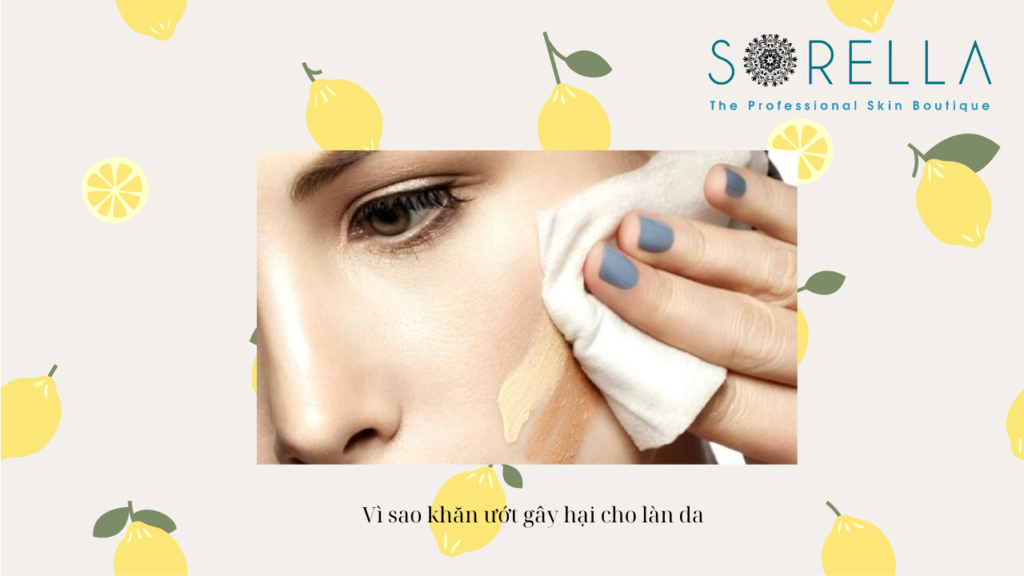Bí quyết làm đẹp
Applying a clay mask with 4 benefits
Effectively applying clay masks can offer remarkable benefits such as controlling excess oil, removing dirt from pores, and refining the skin’s surface structure. Proper usage of clay masks, combined with suitable skincare products, can yield surprising results. Let’s delve into this simple regimen with Sorella.
What is a clay mask?

A clay mask is a skincare product containing natural clay and beneficial minerals for the skin. After undergoing filtration processes, these ingredients are incorporated into various skincare products with diverse functions depending on the type of clay, its composition, and other minerals in the product.
Regarding the type of clay, 5 popular types of clay masks at the moment are:
- Bentonite clay: The main use is to absorb excess oil and sebum on the skin, helping to clean pores and reduce acne, while also having antibacterial properties and helping to soothe the skin.
- French Green Clay: This clay contains many minerals and antioxidants, helps soothe and balance the skin, and absorbs oil and impurities from the skin.
- Rhassoul Clay: Rhassoul is a clay from Morocco with the ability to gently remove excess oil, dirt and impurities from the skin without drying and tightening the skin.
- Fuller’s Earth Clay (Multani Mitti): This clay has the ability to absorb oil, remove impurities and balance natural oils on the skin, making the skin brighter and softer.
- Red Clay: Red clay contains many iron oxides and minerals, thus helping to increase blood circulation, and balance and stimulate skin cell regeneration.
Regarding texture, currently, there are two main types of clay masks:
- Mud/cream form: This mask is pre-mixed with water and can be used directly.
- Powder form: The mask needs to be mixed with water before use, mixed in proportion to have a slightly thick structure.
Benefits of clay mask

Clay masks have many surprising uses as follows:
Control excess oil on the skin
Our skin secretes an amount of oil every day. Besides the benefits of keeping the skin hydrated and not dry or cracked, if too much oil is secreted, it will directly come into contact with dirt and bacteria in the environment. school. Most clay masks have the main and most important use which is to control excess oil on the skin and remove stubborn sebum fibers, so this type of mask is especially suitable for oily skin types. or oily combination skin.
Skin cleansing, in order to get the smooth skin
Our skin is exposed to a lot of dust and bacteria every day, especially when the problem of air pollution becomes alarming, our skin needs to be cleaned deeply and carefully. Therefore, washing your face with facial cleanser, combined with using a clay mask according to the recommended time, about 2 to 3 times a week, will help clean the skin as much as possible, removing dirt and dead skin cells. Exfoliating helps the skin become smoother.
Prevent and treat acne
Excess oil on the skin is often difficult to control, and without appropriate care methods, excess oil will clog pores, causing all types of acne, hidden acne, etc. Therefore, Using clay masks, for the recommended time, according to instructions from a dermatologist or dermatologist will help dry skin, prevent new acne, and improve oily, acne-prone skin.
Brightens and evens skin tone
The more alarming the environment becomes, the more important skin care becomes, especially in cleaning. If dead cells are not cleaned periodically, they will accumulate on the skin and cause the skin to gradually become dull, rough, and lifeless. Therefore, experts say that skin care with clay masks can make skin brighter and more even-toned, especially masks that contain chemical exfoliants.
How to apply a clay mask simply and effectively
How to apply a clay mask simply and effectively? Below are detailed instructions on how to apply a clay mask in the simplest and most effective way. You can refer to it to take care of your skin to be more beautiful and smooth:
Step 1: Cleanse the skin
Clean your skin with products such as makeup remover or makeup remover oil or facial cleanser to remove dirt and makeup on the skin’s surface.
Step 2: Apply clay mask to skin
If using a powder mask, it is necessary to first mix it with water in proportion so that the product has a certain smooth consistency, then apply it to the skin.
If using a cream or mud mask, you can apply it directly to your face.
Step 3: Leave the clay mask on your skin for 7 to 15 minutes depending on your condition and skin type.
Keep the product on the skin for a certain period of time so that the active ingredients in the product work and promote their effectiveness.
Step 4: Remove the clay mask from the skin
Moisten your hands, remove the product by rubbing it evenly on the skin surface in a circular motion and rinse with water until all the product is gone.
Step 5: Continue the skin care steps in your skincare routine
Continue with the next steps in the skincare routine. You should start with toner to help your skin balance moisture immediately and don’t get used to moisturizer at the end of your skincare routine to keep your skin hydrated and plump.
Important notes when using clay masks

To maximize the benefits of clay masks, consider the following tips:
Choose a clay mask suitable for your skin condition and type
- For oily skin: Prioritize white or green clay masks to ensure optimal effectiveness in controlling excess oil, absorbing sebum, removing dead skin cells, and dirt, and antibacterial properties. The reasonable frequency of use is 1 to 2 times/week.
- For dry skin: Prioritize red clay masks to limit irritation, dryness, and redness. Reasonable frequency of use is once a week, always apply toner before using a mask, serum, or moisturizer after using a mask to hydrate the skin.
- For combination skin: Prioritize bentonite clay masks from volcanic ash, use 1 to 2 times a week to clean the skin, help unclog pores, and limit the risk of acne formation.
- For sensitive skin: Prioritize white clay masks but need to test on a small area such as the neck or face near the jaw to test for irritation. The reasonable frequency of use is once a week.
- For acne-prone skin: Use products as prescribed by a dermatologist or dermatologist, giving priority to fine, grain-free, non-rub clay masks to avoid damage to the skin protective barrier.
Keep your hands clean from the skin-cleansing step
Given that hands frequently encounter diverse surfaces and harbor a plethora of bacteria, it is essential to prioritize hand hygiene before commencing with facial cleansing. This precautionary measure serves to significantly reduce the risk of bacterial transfer from your hands to your facial skin, thereby safeguarding against potential skin irritations or infections.
Do not mix too much water with powder mask products
Powdered mask products often have instructions for mixing the mask according to a certain ratio. You should read carefully and mix according to that ratio to get a smooth product. Liquid will make it difficult to use and reduce the product’s effectiveness on the skin or may cause skin irritation.
Do not apply the clay mask too thickly
Applying a sufficient amount of clay mask will maximize the product’s effectiveness. Using a large amount of product on the face can hurt the skin’s protective barrier, causing the skin to become dry, tight, and susceptible. cracked after use. When the skin is too dry, it will secrete oil to balance the moisture. Too much oil will clog pores and cause acne, so the product will be “counterproductive”.
Don’t use a clay mask every day
For optimal skin care, it’s recommended to incorporate clay masks into your routine every other day, adjusting the frequency to 2-3 times per week based on individual skin conditions and types. This tailored approach is crucial as the skin relies on a natural oil barrier to shield its surface and maintain moisture equilibrium. Hence, it’s imperative to regulate excess oil production effectively to prevent any potential adverse effects or damage to the skin. By striking the right balance in your skincare regimen, you can ensure that your skin remains healthy, hydrated, and free from unnecessary harm.
Minimize facial movements while applying the clay mask
Clay masks need to be fixed and slightly dry on the skin, so moving the facial skin causes the structure of the mask layer to shift, reducing the effectiveness of the mask. Not only that, moving before the mask dries will create cracks in the mask layer, causing wrinkles on the skin.
Do not let the mask get too dry on your skin
A clay mask that has dried excessively on the skin will necessitate considerable effort to eliminate it. Moreover, upon rinsing it away, it will result in the skin becoming excessively parched, depleted of moisture, and susceptible to redness and irritation.
Applying gently on the skin, do not rub the skin
Exerting excessive force while rubbing on the skin can compromise the skin’s protective barrier. The abrasions induced by rubbing can be susceptible to bacterial infiltration, thereby facilitating the formation of new acne lesions.
Applying a clay mask effectively will help maximize the product’s effectiveness, leaving your skin dry and smooth. In particular, at a time when climate and pollution problems are becoming more and more serious, using clay masks in your skincare routine will help keep your skin in a healthy and vibrant state. Above are detailed instructions to make applying clay masks easier, simpler, and more effective than ever. Please refer to them for a more scientific skin care method!
Please refer to Sorella Beauty‘s articles below:
8 foot massage spas you may like
The 10 Most Popular Saunas in Hanoi as Chosen by Every Tourist
Top 10 pubs in Hanoi that capture the hearts of the youth
No block ID is set
Tư vấn chuyên môn bài viết:
TS.BÁC SĨ NGUYỄN HỮU QUANG
Bài viết cùng chủ đề:
-
Nên lựa chọn Rejuran hay Karisma?
-
So sánh Karisma và Profhilo – 2 phương pháp trẻ hóa da tầng sâu đỉnh cao
-
Cách diệt chấy rận hiệu quả ngay tại nhà, 8 phương pháp tiêu diệt chấy rận hiệu quả
-
Có nên dùng khăn ướt để tẩy trang? Cẩn thận khi dùng khăn giấy ướt giúp chăm sóc làn da của bạn, 1 vài thành phần của giáy ướt có hại cho da


 中文 (中国)
中文 (中国) 한국어
한국어 English
English





